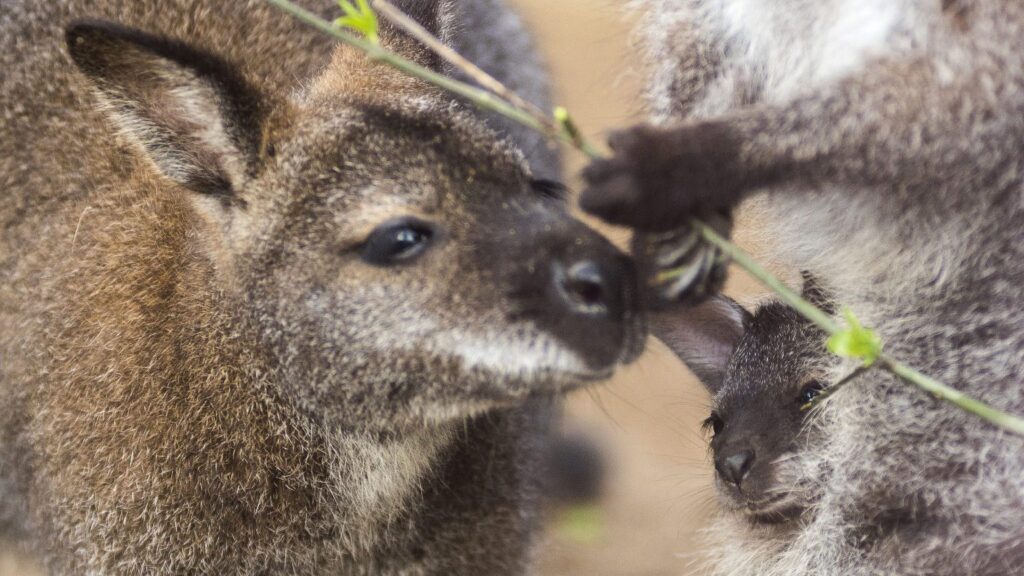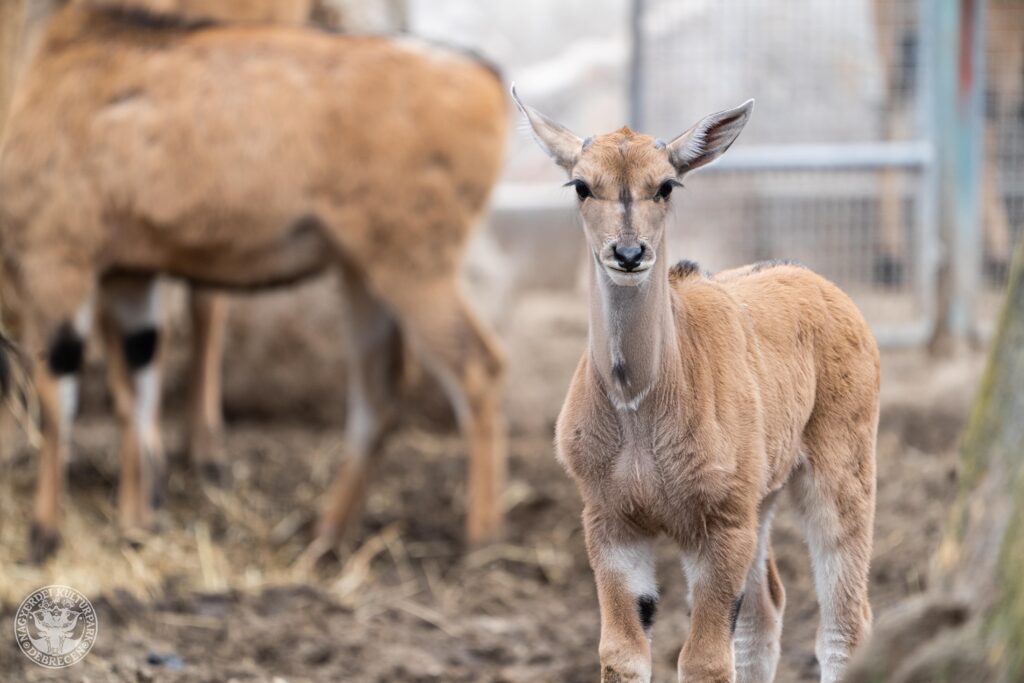This year also promises to be eventful in the country’s largest herd of moose, where a healthy bull calf was born on the first day of spring, March 1st, after about 9 months of pregnancy. Although she will enjoy her mother’s care for a long time to come, the little one is already curiously acquainting herself with her surroundings. Read about the other new additions and Zoo news.
The moose is a real rarity in Hungary , as it can only be seen in Győr and Debrecen, but here in Debrecen we can see new offspring every year.
The moose ( Taurotragus oryx ), native to the southern and eastern savannas of Africa, is the second largest antelope species living today; an adult bull can reach a height of 180 cm at the withers and a body weight of one tonne. No less impressive in size are the vertical white stripes on the sandy or reddish coats and the multi-twisted, straight horns, which often exceed half a meter in length. The species is threatened by habitat loss and poaching for its meat, skin and for trophy, so it is on the World Conservation Union’s (IUCN) Red List of Threatened Species.

Another new addition to the Zoo population is a baby Bennett Kangaroo, which is Native to eastern and southeastern Australia. The Bennett kangaroo lives in coastal and scrub forests. Unfortunately, the baby Kangaroo will spend most of its time tucked away in mothers pouch until around 9 months old, and so will be difficult to spot. Glimpses will be like as shown above to the right of the image, with the baby’s head peaking out of the pouch.
Debrecen Zoo Joins International Re-Introduction Program

In a recent press release the Zoo announced that they have joined an International Reintroduction Program.
This is the very first time that the Debrecen Zoo in Hungary has participated in a transcontinental international conservation breeding program with the direct prospect of being able to reintroduce individuals to the wild. Under the Global Species Management Plan (GSMP) for endangered red pandas, it is one of two European zoos (the other being Copenhagen Zoo, Denmark) recently selected to transfer one individual each to Darjeeling Zoo, India – an institution situated in the Southern Himalayas, where red pandas occur naturally, and specialized in the conservation and breeding of threatened native wildlife. Therefore, one of the female twins acquired in 2014 is currently on her way to Rotterdam Zoo, the institution coordinating the European breeding program for the species, whence she will soon fly to India.
The other twin will not be lonely, either, as she is already being courted by Pandita, the young male transferred to Debrecen last summer under a European Ex Situ Program (EAZA EEP). Their budding love will surely be a sight to see once the zoo reopens, and they are hoped to be the source of further great news in the near future.

